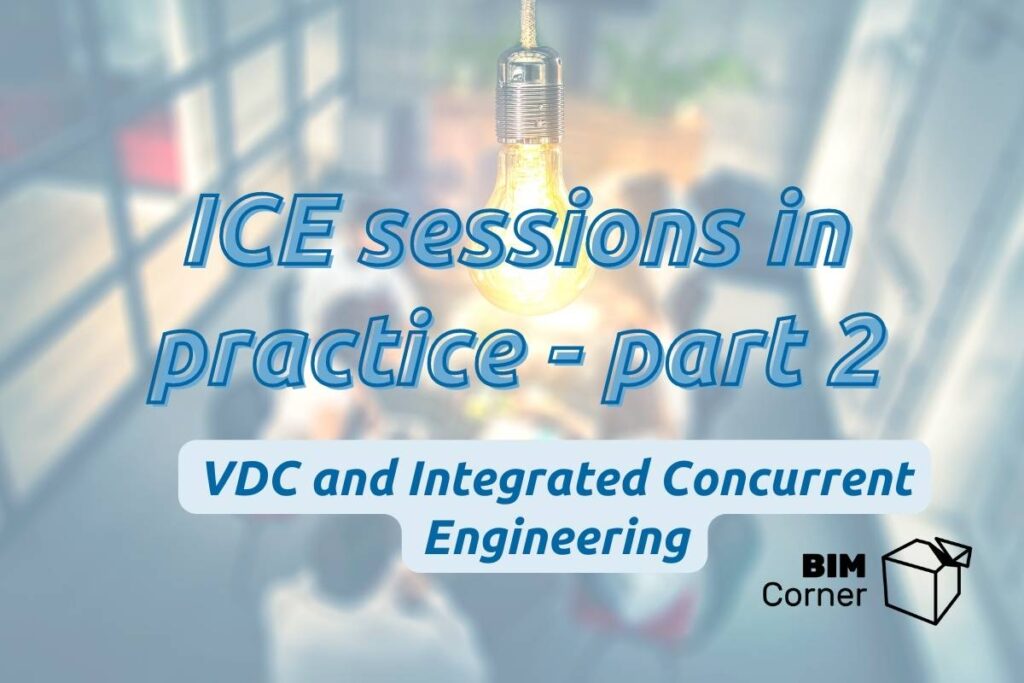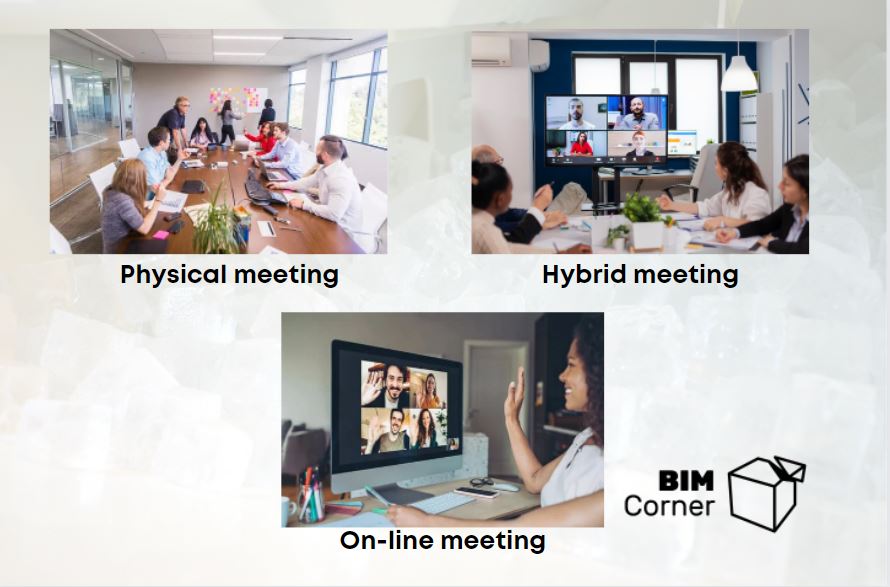The date for your well-prepared ICE session is approaching. You have made all the necessary planning, invited the relevant participants and booked a sufficient meeting room, with possibility for break-out sessions. When all this is done, the next question emerges: how to conduct the ICE session in VDC method in a right way? What should we remember during the meeting and how to follow up the actions?
In the first article ICE sessions in practice – part 1 we looked at the preparations that are necessary to make before the session as part of the ICE sessions in VDC. These were:
2.1. Focus for the meeting
2.2. What is the result that you want to achieve?
2.3. Identify relevant participants from different stakeholders
2.4. Divide tasks and responsibilities
2.5. Create the agenda for the session
2.6. Place for the session
2.7. Invitation
In this article, as part 2 about ICE sessions in VDC in practice, we will cover those topics:
Table of content
This post is a continuation of the series EVERYTHING ABOUT VDC.
3. Execution of an ICE session in VDC
As stated in the first article, please remember, that there are many possibilities for conducting an ICE-session. Each company can have a slightly different manner of doing it. In this article, we are assuming a simple example of how an ICE-session in VDC can be prepared and executed, and we do it by listing important points. You can use it as a form of a checklist, and with practice adjust it to your own needs.
3.1. Present the goal of the ICE session
To start with, maybe some obvious tips, but I have sometimes experienced that people easily forgot about them. In the construction industry we generally tend to start working right away and dive into details and technical discussions without any special intro. But I can assure you, that welcoming all the participants and making sure that everybody in the session gets the same understanding of the common goal and what you want to achieve during the meeting helps in the cooperation a lot. And does not take too much time either.
- Welcome all the participants
- Share the screen and have the microphone and camera on
- Start the session with a short explanation about the common goal and what you want to achieve during the meeting
Example of an ICE session, picture taken from this article.
3.2. Present participants
Make a short presentation round around the table or on-line. This helps people to understand who do they talk with and get to know each others background.
- Have a presentation round – around the table or on-line (or both, in case of a hybrid solution)
- You can ask each participant to tell 2-3 sentences about themselves, or ask key people to present their team members
- State who is the session leader and who is responsible for writing the minutes of meeting
3.3. Present the agenda
In the first article ICE sessions in practice – part 1 we went through the preparations part and presented an example of a meeting agenda. You have already sent this agenda to all the participants while sending the meeting invitation. However it is always important to remind everybody what is the plan for the session. It can happen that somebody did not read the whole agenda, but just their own part, or that they simpy forgot the details.
- Go through the agenda for the session
- Clearly state the need to hold the time for each point
3.4. Present the issue
Before starting a discussion or a working session, make a short introduction to the current issue that will be discussed
- Summarize the status and what has been done so long with the given topic
- Depending on complexity and time available, you can have more than one issues that you will go through during the ICE session
- This point can be done also by somebody else, if it was agreed on before the meeting with the responsible person
3.5. Discussion or a working session
This is the reason for an ICE session – a joint discussion with all relevant people who can make decisions. If the issue is complex, you can split the group into smaller teams – for example, the architect discusses one thing with the client, while in a parallel session, the structural engineer is working on a solution with contractor and supplier.
Again, depending on complexity and the time available, you can have more than one discussions or working sessions that you will go through during one ICE session.
3.6. Making decisions
After each discussion or working session, agree on and write the result of each separate issue. Remember to be as specific as possible, so that there is no doubt about what was agreed. It is best to write down the decisions or comments on-going, during the session, showing the minutes of meetings to all the participants.
Sometimes you will not finalize the decision, and in this case, it is important to write down the further actions and who is responsible for them. If you did not have time to go through all the issues, write under comments, that this point was not discussed and put a new planned date for taking it up.
It is worth to mention, that the points from 3.4 to 3.6 can be repeated during one ICE session, depending on the time and number of issues that you are going through. So after one issue is finished and the decision is made, you will go back to point 4, in order to present the new topic.
3.7. Summary
Another thing which people often forget about, is the summary. It may be understandable, since the sessions are quite intense and people may be tired. But again, it is important to summarize the session and go through all the decisions and actions.
- Summarize the session and go through all the decisions and actions
- Make sure that each action point has a defined responsible person and deadline for the action. In that way you avoid coming to the next meeting, and realizing, that nothing has been done.
- Make an evaluation of the session – ask the participants about the feedback – what went fine and what can be improved? You can use ‘plus and delta’ method to get the comments from others.From experience I see that it is best to plan for and get the feedback about the meeting in the last 5-10 minutes. People are much more open to discussions and feel obligated to give a feedback – positive or negative – directly after the session. Alternatively, send a questionnare after the meeting, however in this case it takes longer time and most probably not everybody will answer it.
- You can present metrics from the session, if you have gathered them during the session itself, or do it in the start of the next one (you can read more about the metrics in VDC here and here).
- Then remember to decide when will be the date and time for the next ICE session, or if you will send the information about it later on. It is much easier to decide on it right away, while people are still in one room.
4. Follow-up
After preparations and execution, the third main part is the follow up. It is crucial to make sure that the job between the meeting is being done, so that you can actually advance with the work until the next session. An important tip: do not wait too long with sending the minutes of meeting. If you do it already the next day after the session, people can still remember what was discussed and can hold the momentum on putting things into actions.
- Send the minutes of meetings latest 1-2 working days after the session.
- Gather the metrics from the session and evaluate them.
- If there are any actions from the ICE session that you or your organization are responsible for, do what was agreed on or delegate the tasks to others.
- Go back to preparations of the next session and send an invitation for that next one.
Please remember also that the best way we learn, is by doing. So maybe even though the first session will not be the perfect one, you will improve it until the next time. After several sessions, you will defnitely get enough practice and experience and you will see a dramatic increase in the efficency and quality of the meetings.
Summary - ICE session in VDC in practice
Remember, that all projects are different and there is no ‘single answer’ that would work out on each of them. For some smaller or uncomplicated projects, there would not be a need for an ICE session. While for others, especially for complex projects (note: not necessarily ‘big’ projects!) with many stakeholders, interfaces and clarifications, one or several ICE sessions could give big-time savings and influence the collaboration in a good way.
In the end, please bear also in mind, that even with great preparations, all tools available, time, a good budget and so on, the ICE session will not work out if you do not include the ‘human factor’ – or in other words, the people! Be prepared that the first meetings will not go as smoothly as you have imagined and not everybody will be enthusiastic about them – introducing all new things takes time. However, give it a try and do not look back – I am sure that you will find a lot of advantages and with some practice and experience, savings of time and money.
Have you participated in an ICE session yourself? What are your experiences with it?
Please share with us your experience and comments below the article!
This post is a continuation of the series EVERYTHING ABOUT VDC.













Really nice outline of ICE! My personal philosophy is to agree in principle on the design change before pointing the relevant parties at each other with a target date … then, move on. On larger jobs I’ve itemized these by the immediate areas, with leading issues 1+ weeks out differed to online clash reports prompting for a resolution. If possible, I like to treat the ICE as a last resort. I’m sure you all are a lot better at this in Norge than we are here in NZ though